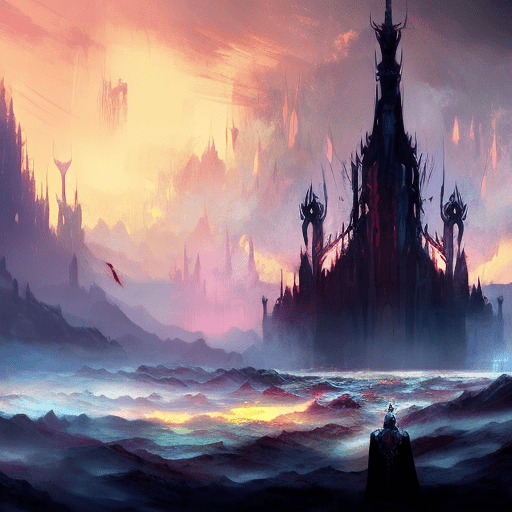One-line summary:
“The Return of the King” is the epic conclusion to J.R.R. Tolkien’s “The Lord of the Rings” trilogy, where the fate of Middle-earth hangs in the balance as the War of the Ring reaches its climax.
The Battle for Middle-earth
In “The Return of the King,” the final installment of J.R.R. Tolkien’s “The Lord of the Rings” trilogy, the War of the Ring reaches its climactic conclusion. The story picks up where “The Two Towers” left off, with Frodo Baggins and Samwise Gamgee continuing their perilous journey to Mount Doom to destroy the One Ring and save Middle-earth from the clutches of the Dark Lord Sauron. Meanwhile, the remaining members of the Fellowship of the Ring, along with the peoples of Gondor and Rohan, prepare for the ultimate battle against Sauron’s forces.
As the armies of Mordor amass their strength, the free peoples of Middle-earth face their greatest challenge yet. Aragorn, the rightful heir to the throne of Gondor, must rally the forces of good and inspire hope in a world on the brink of darkness. With the help of Gandalf the White, Legolas, Gimli, and the hobbits Merry and Pippin, Aragorn leads the charge to reclaim the city of Minas Tirith from Sauron’s forces. The battle that ensues is a breathtaking display of heroism, sacrifice, and the resilience of the human spirit.
The Journey to Mount Doom
While the battle for Middle-earth rages on, Frodo and Sam continue their treacherous trek through the desolate land of Mordor. Hindered by the weight of the Ring and the relentless pursuit of Gollum, Frodo’s resolve is tested to its limits. Sam, ever faithful and determined, becomes Frodo’s pillar of strength as they navigate the treacherous terrain and encounter various dangers along the way.
As Frodo’s burden becomes increasingly unbearable, the fate of Middle-earth hangs in the balance. Will Frodo succumb to the Ring’s power, or will he find the strength to fulfill his mission and destroy it? The journey to Mount Doom is fraught with tension, suspense, and moments of profound despair, as Frodo and Sam inch closer to their ultimate destiny.
The Return of the King
As the War of the Ring reaches its climax, the title of the book becomes a metaphor for the return of rightful rulers and the restoration of hope. Aragorn, having embraced his destiny as the true King of Gondor, leads an army of men to confront Sauron’s forces in a final, desperate bid to save Middle-earth. The stakes are high, and the outcome of the battle will determine the fate of all.
In the midst of the chaos, Frodo and Sam finally reach Mount Doom, the place where the Ring was forged and the only place where it can be destroyed. However, Frodo’s willpower wavers, and he succumbs to the Ring’s power, claiming it for himself. Gollum, driven by his obsession with the Ring, attacks Frodo, biting off his finger and seizing the Ring. In a moment of triumph and madness, Gollum falls into the fiery chasm of Mount Doom, taking the Ring with him and ultimately saving Middle-earth.
As the dust settles and the threat of Sauron is vanquished, the world begins to heal. Aragorn is crowned King of Gondor, and the various races of Middle-earth come together to rebuild their shattered lands. The sacrifices made by Frodo, Sam, and countless others are not forgotten, and a new era of peace and prosperity dawns upon the realm.
- The power of friendship and loyalty in the face of adversity.
- The importance of self-sacrifice for the greater good.
- The triumph of hope and resilience in the darkest of times.
“I will not say: do not weep; for not all tears are an evil.”
– Gandalf the White
In “The Return of the King,” J.R.R. Tolkien masterfully concludes his epic tale of courage, sacrifice, and the enduring power of good over evil. Through its richly developed characters and vividly imagined world, the book reminds us of the strength that lies within each of us to overcome our own personal battles and make a difference in the world.












